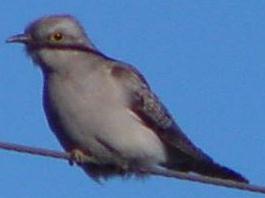
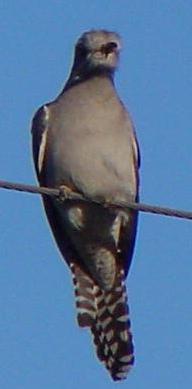 This
Pallid Cuckoo was photographed at Meckering some 150 km East of Perth.
The dark line through the cheek of the bird in the picture at left is not a
marking on the bird but a shadow of the power line above the one the bird is
sitting on. That shadow made identification quite difficult for a while.
This
Pallid Cuckoo was photographed at Meckering some 150 km East of Perth.
The dark line through the cheek of the bird in the picture at left is not a
marking on the bird but a shadow of the power line above the one the bird is
sitting on. That shadow made identification quite difficult for a while.
Note the classic striped tail of the bird in the right hand picture.
A dead give-away for identification purposes.
On Tuesday 18 November, 2003, I saw a White-browed Scrubwren hopping around
outside my kitchen window. Shortly after that, I noticed a dove sitting in
a low shrub which was not normal behaviour for a dove so I looked at it through
my binoculars. I was rewarded by the sight of the Scrubwren approaching and
feeding it! My identification of the 'dove' was quickly changed to a
Pallid Cuckoo. It is quite beyond me how an adult Pallid Cuckoo could get
into the small domed nest with a side entrance of a tiny scrubwren and then how
the baby Cuckoo could have grown to the size of a fledgling in the confines of a
Scrubwren's nest but both feats must have been achieved. I am devastated
to say that I could not get a photograph of the wren putting food into the
Cuckoo's mouth but it was not for want of trying.
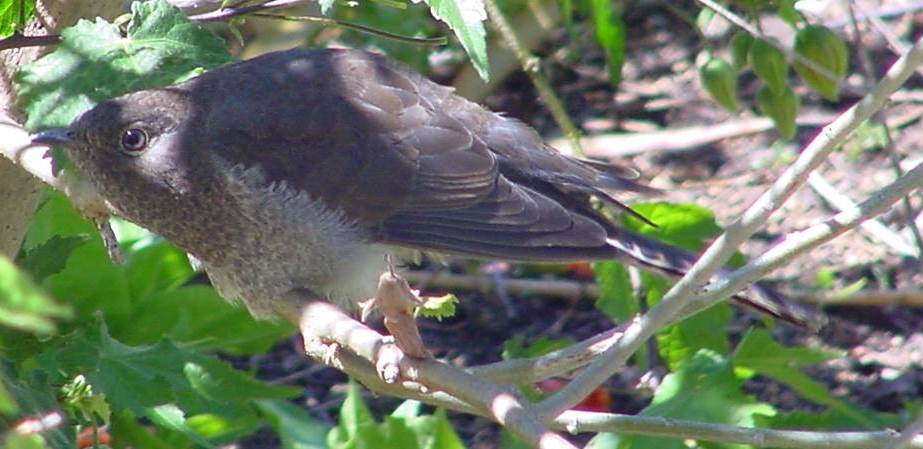
Big Whoops! On 21st July 2006 I received an email from Dr Naomi
Langmore, School of Botany and Zoology, Australian National University, who
pointed out that my identification of the Cuckoo was incorrect. It is in
fact a Fan-tailed Cuckoo chick and not a Pallid Cuckoo!
However, it is pleasing that people actually find and peruse these pages
occasionally.
Dr. Langmore also informs me that "Scrubwrens are one of the major hosts of
fan-tailed cuckoos."
Thank you Dr. Langmore.
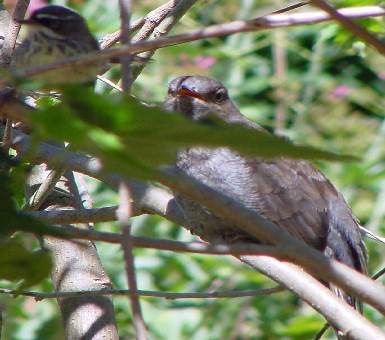
This picture gives some idea of the relative sizes of mother and 'child'
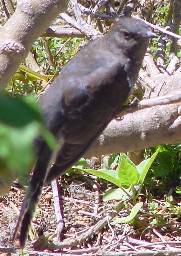
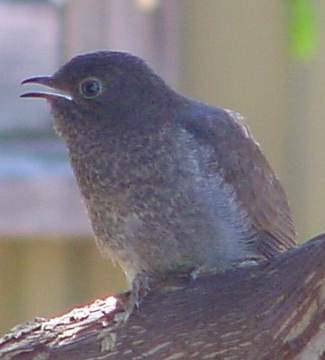
To the left is the baby and below is the mother caught a split second after
feeding junior.
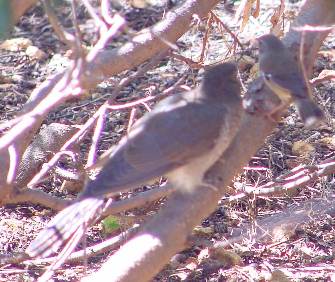
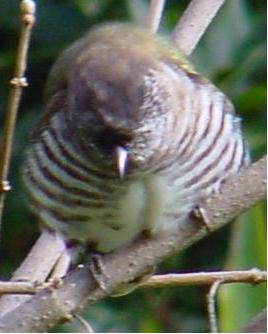
This is a Shining Bronze-Cuckoo. The photographs were taken outside my
back door. I was lucky to get these photographs because it is the only
such bird I have seen.
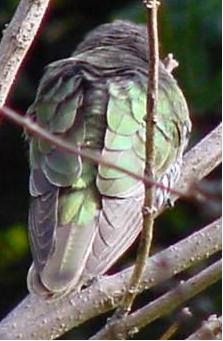 Note
the odd layered appearance of the feathers in the rear view. I have seen
no comment about this tier appearance in any of the bird texts I have read.
Note
the odd layered appearance of the feathers in the rear view. I have seen
no comment about this tier appearance in any of the bird texts I have read.
I originally identified this bird as Horsfield's Bonze-Cuckoo and it was not
until I came to post these pictures to these pages that I discovered the mis-identification.
The Shining Bronze-Cuckoo is a brighter green and Horsfield's has a dark band
about the depth of the eye extending forward of the eye to the beak and extending
rear of the eye and curving down to the neck.
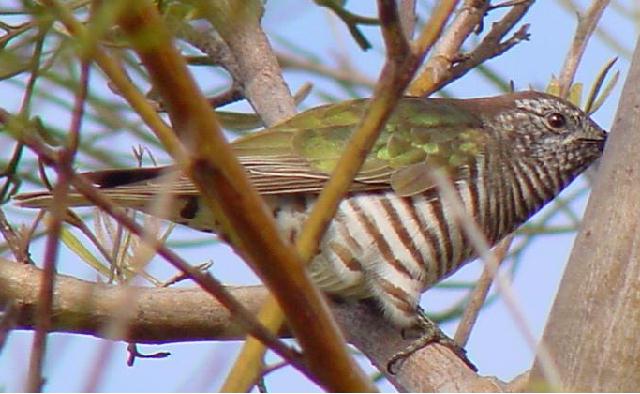
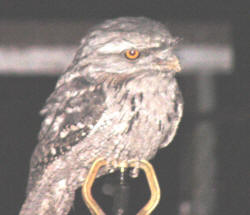 One
night I found this bird sitting on a sprinkler. He or she was quite
content to sit there and have his or her picture taken. I can't say what
the bird thought to the camera flash though. It is a Tawny Frogmouth which
is found all over Australia.
One
night I found this bird sitting on a sprinkler. He or she was quite
content to sit there and have his or her picture taken. I can't say what
the bird thought to the camera flash though. It is a Tawny Frogmouth which
is found all over Australia.
<Previous - Cockatoos, Lorikeets,
Rosellas and Parrots>
<Menu>
<Next - The Kingfishers>

 This
Pallid Cuckoo was photographed at Meckering some 150 km East of Perth.
The dark line through the cheek of the bird in the picture at left is not a
marking on the bird but a shadow of the power line above the one the bird is
sitting on. That shadow made identification quite difficult for a while.
This
Pallid Cuckoo was photographed at Meckering some 150 km East of Perth.
The dark line through the cheek of the bird in the picture at left is not a
marking on the bird but a shadow of the power line above the one the bird is
sitting on. That shadow made identification quite difficult for a while.







